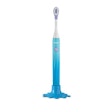
A database review examining nearly 15,000 nerve block procedures performed on children at U.S. hospitals has found virtually no risk of permanent complications or death (Anesthesia & Analgesia, December 2012, Vol. 115:6, pp. 1353-1364).
About 11,000 of the procedures involved a single anesthetic injection, and an inability to place the block or a block failure occurred in only 2% of the procedures.
For the review, a team of U.S.-based researchers from multiple universities searched the Pediatric Regional Anesthesia Network (PRAN), a nationwide anesthesiology database, to gather data concerning the results of anesthetic procedures involving children. Associated complications during and after surgery also were considered.
"The PRAN database, corroborating the findings of European investigators, suggests that regional anesthesia in pediatrics is remarkably safe, with a very low rate of complications," the researchers wrote. To maximize accuracy, they subjected the data to multiple audits so that rates of complications could be determined with certainty.
Rigorously audited cohort
There is a considerable amount of data about the techniques of regional blockade in children, the drugs involved, and the potential complications stemming from each technique, the researchers noted, "but detailed and complete information on complication rates and safety, particularly prospectively collected data, is limited."
With PRAN, a database organized in 2006 and launched in 2007 with six U.S. hospitals reporting every regional anesthetic performed by an anesthesiologist, the researchers were able to source their data from a large, rigorously audited cohort. If intra- or postoperative complications occurred, they were tracked until they were resolved.
Using PRAN, the researchers found that from April 1, 2007, through March 31, 2010, 14,917 regional blocks performed on 13,725 patients had been performed and audited. Single anesthetic injections accounted for 11,000 procedures; the remainder were continuous block procedures, in which a catheter provides constant injections of an anesthetic agent.
"If more than one block or bilateral blocks were placed, a separate record was entered for each block," the researchers explained.
"Complications" were significant events such as serious cardiac or respiratory ailments or deep infection, while "adverse events" pertained to undesirable but nonsevere side effects and events such as a failed block or pruritus.
Minimal complications
A key finding of the study was the absence of long-term sequelae; the researchers did not find a single one that lasted greater than three months. Incidences of death and permanent injury also were absent. When complications or adverse events did arise, they were detected at the time of needle or catheter placement.
Among single-injection blocks, blocks in the pelvic area, or caudal blocks, for lower body procedures were the most common at 40% and most were performed on children 3 years old or younger. While there were no complications, 3% resulted in an adverse event and was most commonly due to an inability to place the block or a block failure.
Among upper extremity blocks, 82% were placed with ultrasound guidance; 70% of lower limb blocks were similarly placed. Taken together, blocks of the peripheral nerves accounted for 35% of all procedures. This frequent occurrence was "possibly driven by the widespread use of ultrasound," the researchers noted. Only 1% of lower limb blocks had an adverse event, while 2% of upper extremity blocks did.
Among 556 head and neck blocks, no complications or adverse events were observed.
Continuous block procedures had a greater likelihood of adverse events, the researchers noted. Nearly 43% were catheter-related, the most common being postoperative catheter malfunctions (kink, disconnect, or inadvertent dislodgement). In 56 instances (9%), the block could not be placed or failed.
"We believe that because of the rigorous auditing, these data represent one of the most accurate attempts at a large-scale estimate of complication rates in pediatric regional anesthesia," the study authors wrote.
Regional anesthesia can be performed safely in children with a relatively low risk of complications, they concluded.



















